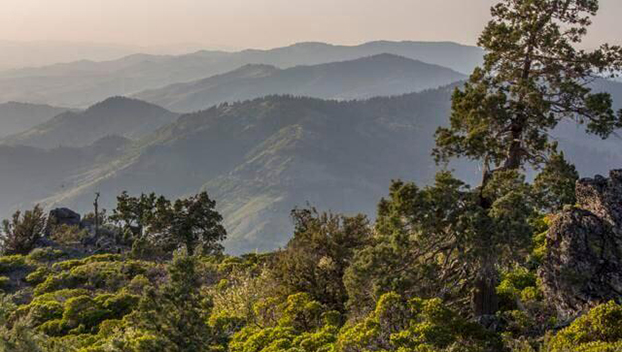ONLINE Dan Fulleton Farm Equipment Retirement Auction
THIS WILL BE AN ONLINE AUCTION Visit bakerauction.com for full sale list and information Auction Soft Close: Mon., March 3rd, 2025 @ 12:00pm MT Location: 3550 Fulleton Rd. Vale, OR […]
Published 8:36 am Thursday, January 23, 2025

The Bureau of Land Management has approved an updated, 20-year resource management plan and record of decision for the Cascade-Siskiyou National Monument, which a local wilderness council chairman categorizes as mostly “a profound disappointment.”
BLM said in a news release Tuesday the plan will guide management of more than 113,500 acres in southwestern Oregon “to protect its biodiversity and important historic resources while providing for public access and recreational opportunities.”
The sprawling area provides habitat for an array of rare plant and animal species across its three ecoregions: the Cascade, Klamath and Siskiyou.
The monument was established by presidential proclamation in 2000 by Bill Clinton and expanded through another presidential proclamation by Barack Obama in 2017.
The U.S. Supreme Court decided in March it would not hear appeals in two court cases that upheld the expansion. The high court’s decision meant that rulings by appellate courts headquartered in Washington, D.C., and San Francisco supporting the expansion would remain in place.
The original monument was about 52,000 acres, while the expansion in 2017 included about 48,000 more acres, all federal land. Another 13,131 acres were acquired from willing sellers. The monument takes in 113,507 acres total southeast of Medford.
The plan’s underlying purpose is to provide a management framework, including objectives and management direction, that guides BLM to protect and restore the resources, objects and values for which the area is designated over the next 20 years. The plan doesn’t directly regulate the more than 500 pieces of private property within the monument boundaries.
The BLM’s new consolidated plan will replace three separate plans and “will ensure more consistent management of the entire monument,” according to the release.
A BLM summary of the new plan notes the following action areas:
Dave Willis, chair of the Soda Mountain Wilderness Council, said in a statement to the Rogue Valley Times that the approved Resource Management Plan and final environmental impact statement appear little changed from earlier proposals, despite protests that were filed.
“BLM’s final revised Record of Decision/Resource Management Plan for the Cascade-Siskiyou National Monument is mostly — not entirely, but mostly — a profound disappointment,” he wrote. “There are some good things in BLM’s revised Monument plan, but for the most part, BLM’s Monument plan revision is chainsaw-heavy, does not take seriously the negative impacts of commercial cattle grazing and proliferating (even imported) feral horses, refuses to carry forward existing and create new Areas of Critical Environmental Concern and Research Natural Areas, and too often semantically contorts to evade the singular protection mandates of this remarkable Monument’s designating proclamations.
“BLM’s now-approved ‘up-to-two-acre openings’ — aka clearcuts — have no place in an already diverse monument landscape uniquely established to protect biodiversity,” Willis continued. “Scientists and other citizens who have painstakingly worked for decades to protect this special place are quite sad to say — when not angry — that BLM’s revised plan is not worthy of this monument.”
Willis cited former U.S. Interior Secretary Bruce Babbitt’s decision after 1996 to take monument management on BLM lands away from the National Park Service and allow BLM to manage protections. He did call Babbitt’s decision “a well-meant effort to reform BLM’s commodity-oriented custom and culture.”
“But going on a quarter-century since this particular monument was established, BLM’s revised plan here shows that Babbitt’s gamble has progressively — and now decisively — failed at Cascade-Siskiyou. BLM as an institution — especially BLM in Oregon — is simply not capable of doing the protection job required by the Monument proclamations.”
The final proposed plan was released in October. A period to file protests ended Nov. 12, and Willis said the wilderness council, joined by groups including Oregon Wild, KS Wild, the Center for Biological Diversity, Wild Heritage and the Western Watersheds Project, filed two protests among the 11 protests that were formally lodged. BLM’s public record shows four were dismissed as “comments only” and seven were denied, including the pair of wilderness council-backed protests.
The BLM received nearly 4,000 comments during the entire public input period, officials said Tuesday. Almost 1,000 comments were received on an initial draft plan put out by the agency in April. Four public sessions were held this spring to gather input. The process has been developing since June 2023 when public meetings were held to gather comment for the first update to the original 2008 management plan.
The BLM release states that the plan, “which incorporates public input received through a 90-day public comment period and multiple public meetings, uses the best available science to protect the monument’s objects of scientific and historic interest.”
To learn more and to read the full plan, visit the BLM National NEPA Register online.